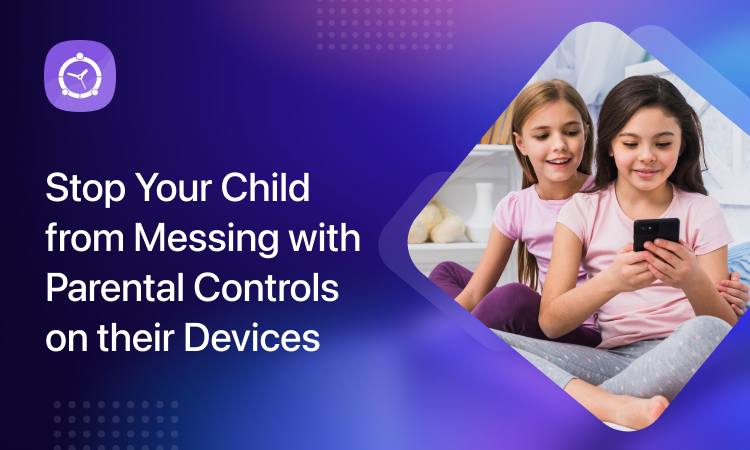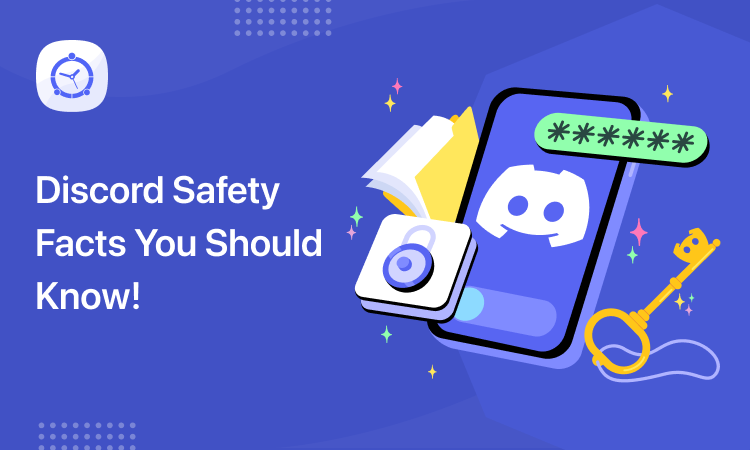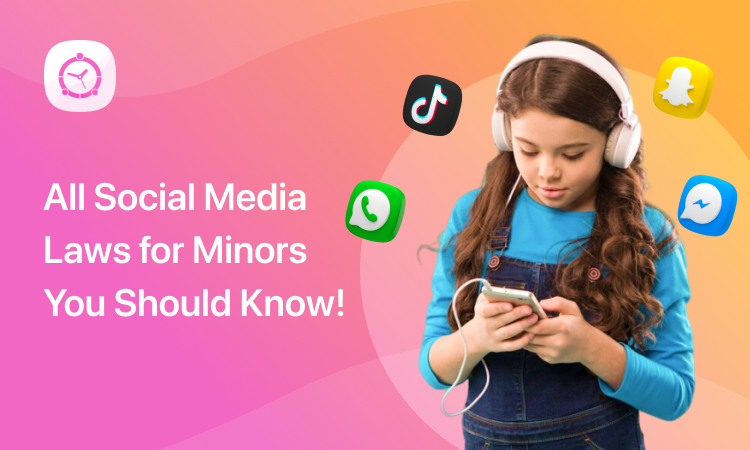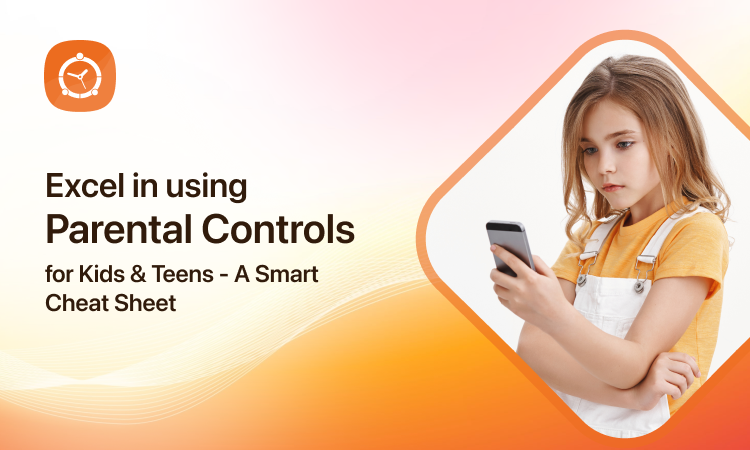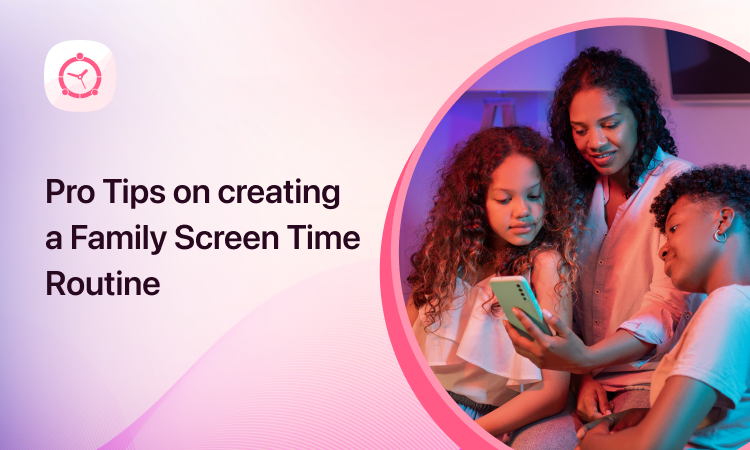Setting parental controls on your child’s devices is not always easy and simple. If your child is a tech geek, you are in great trouble. It will take a few minutes for your child to know that you have installed the parental control app on the device and induced a few rules. And with this discovery, your child starts decoding the rules and messing up with the parental controls.
Well, what can be the way out? Using parental controls and stopping your child from messing with them is big. Plus, the retaliation coming from the kids for not following your rules and looking for loopholes is a different stress.
Thankfully, in digital parenting, everything can be sorted with a bit of planning, communication, and smart play. Let’s discuss how to make your child comfortable with the parental controls and convince them not to mess it up.
What You Can Do to Stop Kids from Messing Parental Controls?
Just imposing parental control rules on kids is not enough; it’s more devastating. You may not have difficulty with toddlers or tweens, but pre-teens in their growing stage and teens exploring technology have a different perspective on parental controls. They may retaliate against you about the settings or even want to bypass them secretly. Kids might go a little overboard since they understand technology and have good research abilities.
Well, dealing with this situation is easier and smoother when you work around it to neutralize the aggression or retaliation. Here is what you can do to make the situation better and under control.
Discuss the Importance of Parental Controls
When we talk about parental controls on children’s devices, these are mostly related to screen time limits, app and web blockers, contact monitoring, social media monitoring, and location tracking. All these things provide parents with complete control over their child’s device. Well, that’s in the child’s favor, but you have to make this understood by them.
Discussing and communicating the importance of these parental controls with your kids is important. Let them know that limiting screen time is essential to avoid overexposure to digital screens, which will cause them physical and psychological issues. Also, they should understand that all the apps or content online are unsafe for them. By introducing them to the concept of PG (Parental Guidance) content, they will be sensitized to it. Enable them to filter the sites and apps themselves and then offer them a little help with the app and web blocker to keep them safe.
This way, you are not only letting them enjoy digital space freely but also saving them from psychological stress. With the digital algorithm, kids may see a lot of things together, and filtration can be stressful for them. So, it’s better to help them with a few simple and effective settings.
Normalize Parental Controls & Screen Time Restrictions Among Kids
It’s crucial to instill in children that parental controls and screen time restrictions are not punitive measures but tools for their protection. Parents can start by having open conversations with their children about the reasons behind these controls, emphasizing that they are in place to ensure their safety and well-being.
Children can develop a healthy relationship with technology by integrating parental controls and screen time restrictions into everyday life from an early age. Just as we teach them about road safety or healthy eating habits, teaching them about responsible digital behavior is equally important. Encourage children to view these controls as guardrails that guide them toward making positive choices online rather than as limitations on their freedom.
Moreover, parents can lead by example by adhering to their screen time restrictions and demonstrating responsible technology usage. This normalization fosters a household culture where everyone understands and respects the boundaries, creating a supportive environment for children to navigate the digital world safely and responsibly.
Neutralize Peer Pressure on Kids about Digital Limitations
Peer pressure can be a significant challenge for children when it comes to accepting digital limitations set by their parents. However, there are several strategies parents can employ to neutralize this pressure and help their children understand the importance of adhering to these restrictions:
Open Communication
Foster an environment where your child feels comfortable discussing their concerns about digital limitations. Listen to their perspective without judgment and explain the reasons behind the rules clearly and clearly.
Educate About Online Risks
Help your child understand the potential dangers of unrestricted internet access, such as cyberbullying, inappropriate content, and online predators. Empower them with knowledge to make informed decisions about their online behavior.
Encourage Offline Activities
Promote activities that don’t involve screens, such as sports, hobbies, or spending time with friends and family. Emphasize the value of face-to-face interactions and the benefits of unplugging from technology.
Set a Good Example
You can lead by example by demonstrating responsible digital behavior yourself. Limit your screen time, engage in offline activities, and prioritize quality time with your family.
Peer Support Networks
Encourage your child to build friendships with peers with similar values regarding screen time and digital limitations. Surrounding themselves with friends who respect these boundaries can help alleviate peer pressure.
Reinforce Self-Confidence
Remind your child that it’s okay to be different and make choices that prioritize their safety and well-being. Reinforce their self-confidence and assure them that following the rules set by their parents is a sign of maturity and responsibility.
By implementing these strategies, parents can help neutralize peer pressure and empower their children to make positive choices regarding their digital habits despite external influences.
Mediate and Decide Rules with Kids
Creating and implementing digital rules shouldn’t be a one-sided decision made by parents alone. Instead, it should be a collaborative process involving both parents and children. By meditating and deciding rules, parents can foster a sense of responsibility and ownership in their children, making them more likely to adhere to the established guidelines.
Here’s how parents can effectively mediate and decide rules with their kids:
- Initiate an open dialogue with your children about their digital habits and preferences.
- Listen to their perspectives, concerns, and suggestions regarding screen time and online activities.
- Based on the discussion, establish clear guidelines that address parents’ and children’s needs and concerns.
- These guidelines should cover screen time limits, appropriate content, online privacy, and device usage rules.
- Be willing to negotiate and compromise on certain rules to reach a consensus that works for everyone.
- Ensure the rules are realistic and achievable for your child’s age and maturity level.
- Avoid overly strict or unrealistic restrictions that may lead to resentment or rebellion.
- Maintaining consistency in enforcing the established rules while being flexible enough to adapt them as needed.
- Regularly revisit and revise the rules based on your child’s development and changing circumstances.
- Model the behavior you expect from your children by adhering to the same rules and guidelines yourself.
Parents can create a sense of ownership and mutual respect regarding digital rules by involving children in the decision-making process and considering their input. This collaborative approach promotes responsible digital behavior and strengthens the parent-child relationship.
Do Not Let Them Access Parent Devices to Make Changes
One common way children bypass parental controls is by accessing their parent’s devices to make changes or disable restrictions. To prevent this, ensure your devices are password protected and never share your passwords with your children. Keep your devices out of reach or use biometric authentication methods only you can access.
Moreover, develop habits among kids not to peek into elders’ devices. When they know they cannot and should not touch your devices, they will not want to access them at any cost.
Keep an Eye on All Bypass Attempts
Despite your best efforts, children may still attempt to bypass parental controls. Staying vigilant and monitoring any attempts to circumvent the rules is essential. Regularly check their devices’ settings to ensure they haven’t made any unauthorized changes. Be proactive in addressing bypass attempts and use them as teachable moments to reinforce the importance of following the rules.
The parental control app you are using will usually block any bypass attempts and even inform you about any attempts. Eventually, you can take action to ensure these attempts will not impact your rules. However, it is suggested that you not act aggressively when your child makes any such attempt. Instead, you can sit and talk to them about the issue and guide them to align with the rules.
family times Uninstall Protection
For kids and teens with extended technology knowledge and practices, it’s convenient to make changes in the built-in parental controls. They also find out the alternatives to dodge the settings. However, things are quite different with FamilyTime. The FamilyTime Jr. app is powered by uninstall protection. That means that your child cannot uninstall or deactivate the app by any means or hack.
The only way to uninstall the app from your child’s device is by using your passcode. As long as you have a secure password, the app is safe. Moreover, there is no chance your child can ever bypass any settings of the app. All the rules are solid and workable, so your child has to follow these rules once you set them.
With FamilyTime, you can rest assured that parental controls are working fine and will not be bypassed. The app is regularly updated, and developers work around the updates to ensure that all of its features work seamlessly, giving you a good hold over your child’s digital activities.
Wrap Up!
Being parents, you want to do the best for your child’s digital safety. Despite the age group, your young kids, pre-teens, and teens are under threat. It’s the reason FamilyTime offers you complete digital safety solutions for kids. However, these tech freaks have ways to dodge your parental settings and defy the rules. You can follow certain practices to convince the kids not to defy the parental control rules, like screen time limits, app blockers, content filters, and more.
Additionally, to avoid the hassle, adopt FamilyTime as your best parental control app with uninstall protection. Your kids and even teens cannot bypass the rules or uninstall the app. It ensures your child’s devices are protected and always under your watch.

